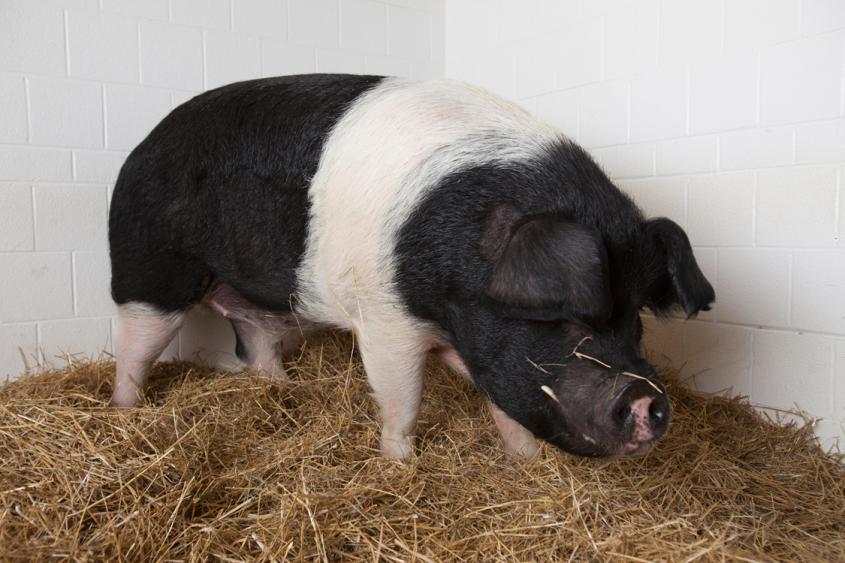Cornell Hospital’s namesake made new paths for large animal cancer treatment
Visitors to Cornell’s Nemo Farm Animal Hospital may not think twice about the name—chances are, they’re preoccupied with their own animals that are there receiving care. But the hospital’s namesake has a very special story, one that made headlines around the globe and charted new insight into treatments for large animals.
The name comes from Nemo, a black and white Hampshire pig brought to Cornell, where veterinarians diagnosed him with B-cell lymphoma. Cornell clinicians had treated dogs and cats with this cancer, but this was their first experience dealing with the disease in a 730-lb swine.
“We mainly work with dogs and cats but will occasionally consult on other species such as horses and goats,” says Cheryl Balkman DVM ’98, section chief of oncology. “We have not consulted on very many pigs--Nemo was our first (and only so far) pig with lymphoma.”
Large animal practitioners do not see as many cancer cases as their small animal counterparts, due to the fact that many large animals are raised as production animals and do not live long enough for cancers to develop. While some pet pig breeds, such as pot-bellied pigs, are more frequently diagnosed with cancer due to their longer lifespans, Hampshire pigs like Nemo had rarely been diagnosed with the disease.
“There are documented cases of lymphoma in pigs but there is nothing in the veterinary medical literature about treatment for a pig with lymphoma,” Balkman says. “We developed Nemo’s treatment plan based on what is known about lymphoma in other species.”
Veterinarians do see more cancer cases in dairy cows, in which ocular and lymphatic cancers are common. Ocular cancers are relatively easy to treat via tumor removal, however lymphatic cancers, which are systemic, are rarely treated due to the expense and lack of approved protocols. Cancers also show up in equine patients—typically in the skin or lymph system. Veterinarians can often remove skin tumors—or elect to leave them alone, depending on the tumor type.
Nemo and his diagnosis of lymphoma presented a complex challenge for the Cornell clinicians, who decided to use what’s known as a CHOP chemotherapy protocol--similar to what is used to treat people, dogs, and cats with lymphoma. “CHOP is a multidrug protocol consisting of cyclophosphamide, doxorubicin, vincristine, and prednisone,” Balkman explains. “We weren’t quite sure if the dosages would translate between species, but Nemo handled everything quite well with minor adjustments along the way.”
The other big challenge they faced was how to administer the intravenous chemotherapy. “The surgeons in the Large Animal Hospital worked with the surgeons in the Small Animal Hospital to place a vascular access port that allowed us easier access to his veins so that we could administer the chemotherapy,” says Balkman. “We had radiologists help evaluate his response to treatment with ultrasound; we had cardiologists evaluate his heart; we had the clinical pathologists evaluate his lab work. Nemo’s care involved many veterinarians, technicians, animal care attendants, and students throughout the College. It was truly an honor to have been part of Nemo’s journey.”
Thanks to this regimen and the other daily care that Nemo’s clinical team carried out, the pig went into remission for a full year—an unheard of accomplishment for a pig with cancer. While Nemo did eventually pass away from the disease, he left behind a ground-breaking body of knowledge in farm animal oncology behind him.





